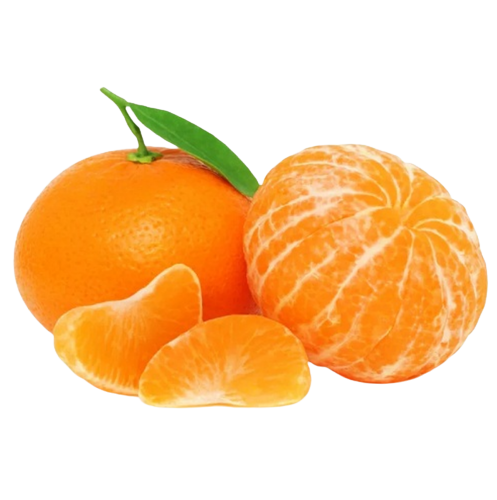Orange fruit - Health benefits, application, chemical constituentsz side effects and many more
Orange - Fruit
Many such fruits are found in the winter season, which is very healthy for health. One of these fruits is orange. Orange also enhances the beauty of the fruit market during the winter season. This fruit is very juicy. Its taste and aroma are completely different from other fruits.
It shows anti-inflammatory, anticholesterolemic, analgesic, antiasthmatic, antiscorbutic, antiseptic, antitussive, carminative, expectorant, stomachic properties.
Click here for more information about Antioxidants and Free radicals
It has different names in different languages such as Marathi name(laramj, narangi, sakulimba,suntra), Hindi name(amritphal, khatta, narangi,sangtara,sangtra,sunthura), English(orange), Ta..................read more
History
The orange originated in a region encompassing Southern China, Northeast India, and Myanmar, and the earliest mention of the sweet orange was in Chinese literature in 314 BC. As of 1987, orange trees were found to be the most cultivated fruit tree in the world. Orange trees are widely grown in tropical and subtropical climates for their sweet fruit. The fruit of the orange tree can be eaten fresh, or processed for its juice or fragrant peel.
The sweet orange is not a wild fruit, having arisen in domestication from a cross between a non-pure mandarin orange and a hybrid pomelo that had a substantial mandarin component. Since its chloroplast DNA is that of pomelo, it was likely the hybrid pomelo, perhaps a BC1 po..................read more
Vitamin and Mineral content
Vitamin : B1, B2, B3, B5, B6, B9, A, E, C, choline
Minerals : Calcium, Iron, Magnesium, Manganese, Phosphorus, Potassium, Zinc
Orange flesh is 87% water, 12% carbohydrates, 1% protein, and contains negligible fat (table). In a 100 gram reference amount, orange flesh provides 47 calories, and is a rich source of vitamin C, providing 64% of the Daily Value.
Oranges contain diverse phytochemicals, including carotenoids (beta-carotene, lutein and beta-cryptoxanthin), flavonoids (e.g. naringenin) a..................read more
Properties and benefits
- Rasa: Sweetish; sour and bitter in taste..
- Guṇa: Palatable [hRRidyaM], light for digestion;
- Vīrya: Cold in potency.
- Effects on Doshas: Reduces vata when taken in raw state. It taken after cooking it reduces the kapha and pitta.
- Click here for more information about Tridosha
- Increases the physical strength; increases the digestive agni; reduces the burning sensation of the body and body parts; improves the taste perception in an..................read more
Whole oranges vs. orange juice
Even though both orange juice and whole oranges are nutritious, there are several differences between the two.
- some orange juices contain added sugars, which you should keep to a minimum for optimal health.
- Orange juice also co..................read more
Uses, Benefits, Remedies and Application
1) Orange is packed with various essential nutrients and a high fiber content that helps improve the energy levels. The daily consumption of 1-2 cups of Orange juice before breakfast improves digestion.
2) Orange peel or essential oil helps delay skin ageing due to its high antioxidant property. It keeps the skin moisturized, softens. It also reduces inflammation in the affected area because of its anti-inflammatory property.
3) Orange reduce the synthesis and release of lipids in liver.
4) You should eat 2-3 Oranges in a day. However it is generally advisable to avoid them in the evening and night and in case you have a sore throat, cough and cold.
5) Orange essential oil is used in many products such as cosmetics, medical formulations, beverages and foods, as as well as in aromatherapy.
6) Oranges are a rich source of carotenoid. The Vitamin A present in them play an important role in ke..................read more
Further read on following link
https://kbjawadwar.blogspot.com/2021/11/orange-fruit-health-benefits.html
Side effects
- Orange should be avoided if you have acid reflux or ind..................read more
If you want to give more suggestion in this, then comment us, we will replay your comment.
If you like this post, then share it and follow us on Instagram (@healthyeats793) and many thanks for coming to our site Healthy eats
keep visiting
Follow us
2) Facebook
3) Pinterest
🙏🙏Subscribe and share for latest updates 🙏🙏
More posts from our site
- Click here for more information about Tamarind
- Click here for more information about Nutmeg (Jaiphal)
- Click here for more information about Viruddha aahra
- Click here for more information about Bay leaves
- Click here for more information about Jambul (java phalam)
- Click here for more information about Marking nut (bibba)
- Click here for more Home remedies of Nirgundi
- Click here for more information about saffron
- Click here for more information about Neem
Refrence
1) J. Agric. Food Chem. 2015, 63, 2, 578–587 doi:10.1021/jf505297t. PMID 25539394.
2) Chapter 3.CITRUS RETICULATA BLANCO.REVIEW OF LITERATURE
3) J FundamAppl Sci. 2017, 9(3), 1351-1357
4) Eur J Nutr. 2016; 55(6): 2021–2029. Published online 2015 Aug 18. PMCID: PMC5009163
5) ISRN Nutr. 2014; 2014: 405867. Published online 2014 Mar 4. PMCID: PMC4045306
6) PUBMED
7) NCBI
8) Google Scholar
9)Bhavaprakasha nighantu
10) Dhanvantari nighantu





Comments
Post a Comment